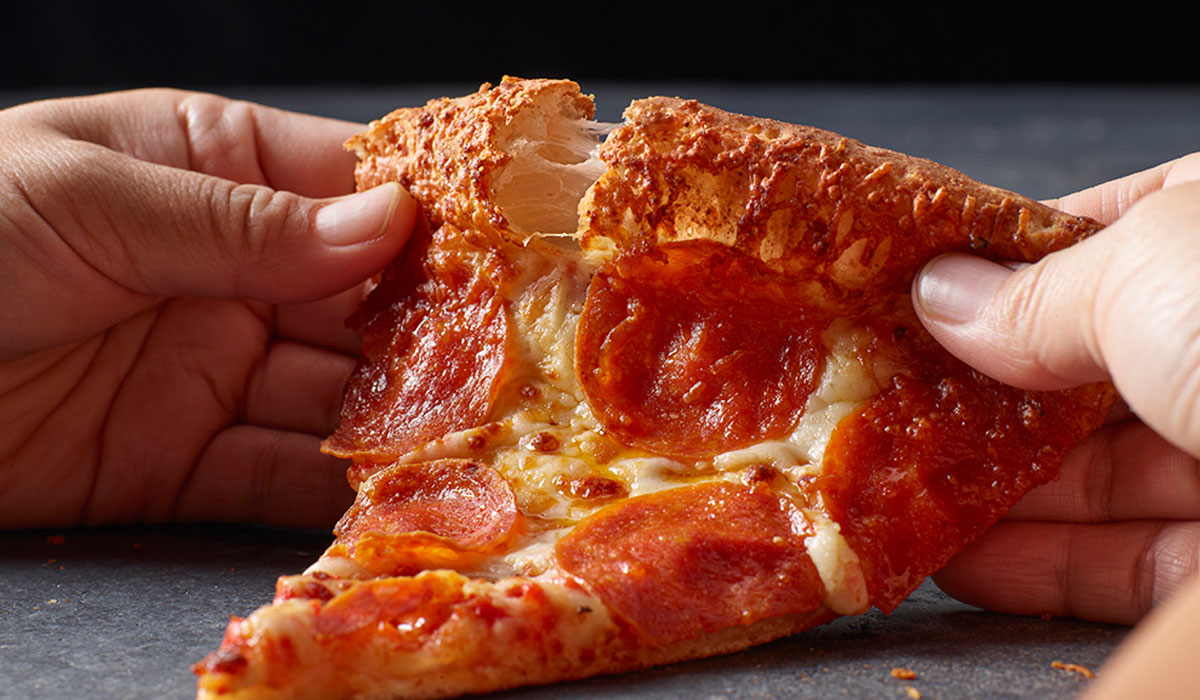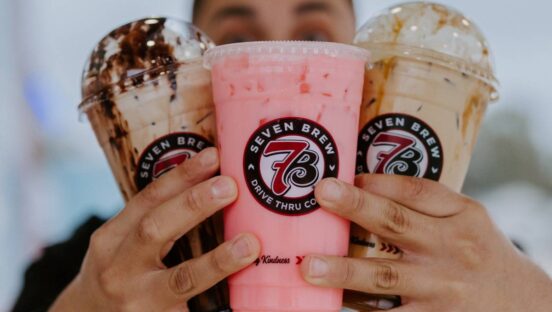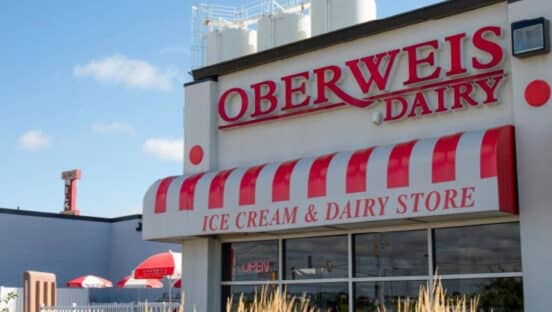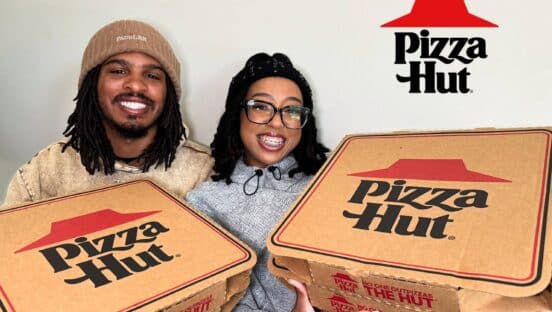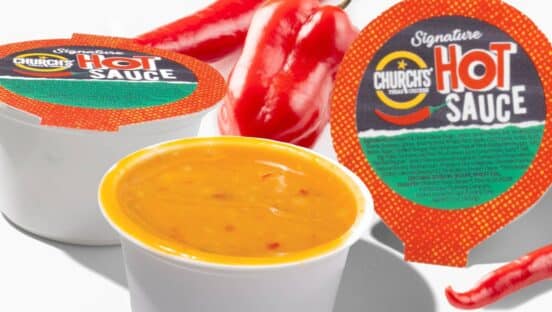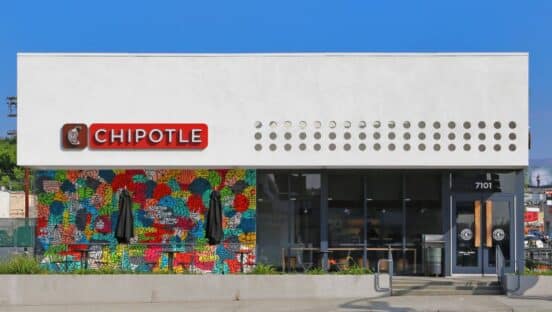Throughout 2019, restaurants across all sectors faced a similar theme. Eroding guest counts balanced by an acceleration in guest checks. Restaurants weathered traffic declines thanks to a consumer more willing to spend on dining out. According to data from the U.S. Census Bureau, sales at eating and drinking establishments rose more than 4 percent in 2019. That beat year-over-year grocery sales growth of 3 percent.
Also, the National Restaurant Association predicted business to hit $863 billion, a 3.6 bump from 2018. You can credit the rise in consumer sentiment to a strong jobs market and tax cuts.
What’s taking shape, though, has major implications for 2020.
It’s providing operators a counter punch to slowing growth. Restaurant sales have enjoyed a 6 percent compound annual growth rate, or CAGR, since 1970. But that’s crawled to 4 percent since the economic downturn in 2008, per the Association. However, people are spending more of their income on food—a sign restaurants today are seen as a cost-effective option for younger generations to chase experiences.
In 1955, as CNBC points out, 25 cents of every $1 spent on food went to restaurants. Today, it’s more than half.
Association SVP of research, Hudson Riehle, noted in the article that quick service has grown faster than sit-down chains during this evolution for two main reasons: The restaurant industry is being driven by convenience and socialization. The definition of “experience” is no longer handcuffed to great service. There’s far more emphasis on erasing friction from the point of impact. Being able to offer a great delivery experience from start to finish, for instance, holds as much weight with some consumers as getting a great server.
The Association found 38 percent of adults in the U.S.—and a whopping 50 percent of millennials—are more likely to have food delivered than just two years ago. In the company’s annual State of the Restaurant Industry Report, fewer than one in 10 operators said their delivery sales declined. Per The NPD Group’s CREST data, nearly 70 percent of customer traffic in the quick service, coffee, and snack segments is coming via off-premises channels.
Broken down:
- Family Dining: 20 percent
- Casual Dining: 17 percent
- Fine Dining: 6 percent
- Quick Service: 72 percent
- Fast Casual: 50 percent
- Coffee & Snack: 73 Percent
An equally telling sample, these are the percent of restaurant operators planning to devote more resources to expanding off-premises:
- Family Dining: 41 percent
- Casual Dining: 35 percent
- Fine Dining: 35 percent
- Quick Service: 36 percent
- Fast Casual: 39 percent
- Coffee & Snack: 43 percent
So, roughly four in every 10 operators.
What we do know then is that restaurants are doing everything they can to attract a younger generation characterized as digital natives. The result is more layers of technology, personalized marketing and incentives, loyalty, and an emphasis on rewards.
All of these initiatives are worth investing in, simply, because it’s difficult to predict if consumer confidence will gain or wane in the coming years. There are trade agreements and other external factors, and the reality that more people are making purchases from home. That includes restaurants.
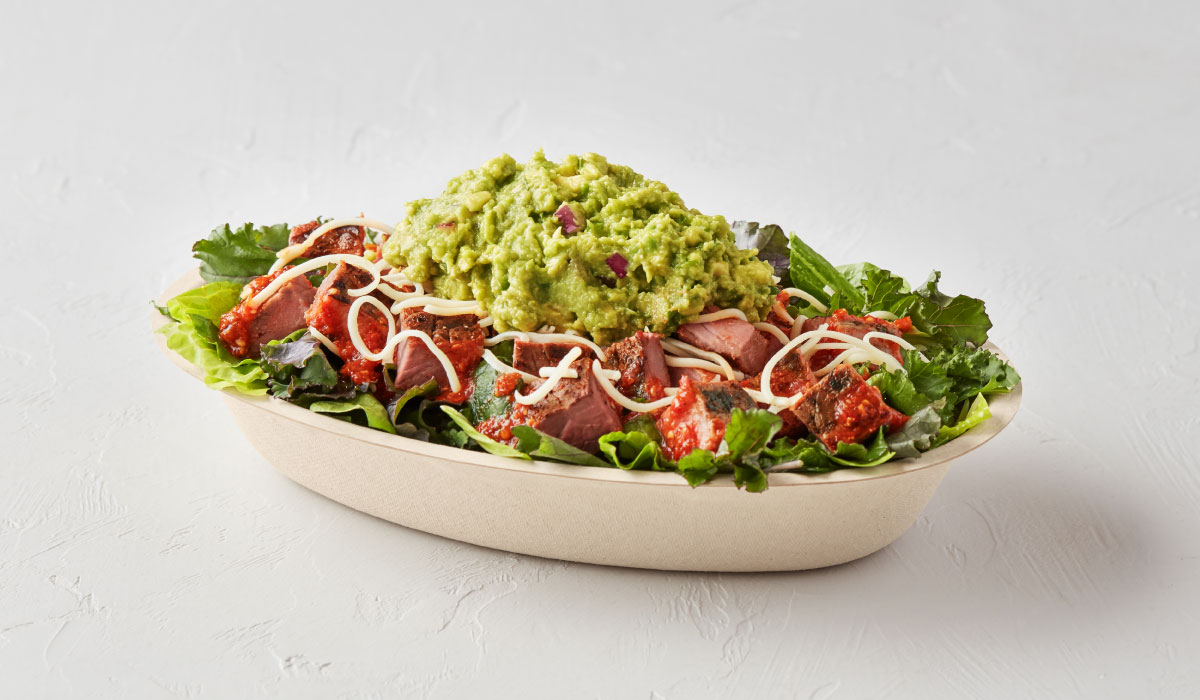
Let’s turn to the present
BTIG analyst Peter Saleh wrote Friday in a note that restaurant industry traffic appears destined for another negative year. But there’s reason to believe it could be even steeper.
The presidential election (and all that leads up to it), as well as this summer’s Olympics aren’t necessarily good news for restaurants.
In 2016, the event presented a “significant distraction from restaurant visits,” Saleh said, “which has negative implications for most of casual dining given their dependence on in-restaurant sales.”
Concerning the election, the feeling that all you see on TV are political ads? That’s not ideal for operators, either. Expect elevated media inflation this year “as candidates battle for voter attention on national TV,” Saleh said.
Concepts that cater to off-premises dining and have invested in advertising budgets are best positioned in 2020, Saleh believes.
The Olympics and presidential debates could serve as an accelerant for the aforementioned off-premises trends. Even more people are likely to stay in instead of go out to restaurants.
Saleh estimated the traffic hit at an additional 100–150 basis points “as consumers opt for their couch versus a restaurant dining room.”
“We believe this dynamic bodes well for the pizza delivery operators as well as concepts with significant off-premises sales, like Chipotle and Wingstop,” he wrote.
If restaurants weren’t investing in off-premises and advertising in 2019, this coming year will be a tough one to play catch-up. In addition to the weaker traffic restaurants typically experience during election years and summer Olympics, traditional TV media tends to be more expensive as political campaigns drive up rates ahead of the November election.
“While many restaurants have been shifting advertising dollars to digital and social channels, we believe the majority of operators will have flat to negative TRPs in 2020 given the inflationary trend,” Saleh said.
And no look-ahead could exist without factoring in wage inflation. Akin to 2019, restaurants are likely in for mid-single-digit rises as 24 states hike minimum wage and the war for talent gains momentum. California’s minimum wage is headed up 8.3 percent to $13 per hour as it tracks toward $15 by 2022. That could signal serious battles for brands like Jack in the Box, Del Taco, and The Cheesecake Factory, Saleh said.
Using data from the U.S. Census Bureau’s American Community Survey, the Association said the restaurant industry has added jobs with annual incomes between $45,000 and $74,999 at a rate more than three times stronger than the overall U.S. economy.
The number of jobs in this income range boosted 71 percent between 2010 and 2017 and it appears that will continue. In 2009, 12.3 million people were employed in the restaurant industry. In 2019, it was about 15.3 million.
“The sales headwinds, combined with media inflation from the multitude of campaign advertisements and continued labor pressure, leaves us with a relatively cautious outlook compared to recent years,” Saleh said.
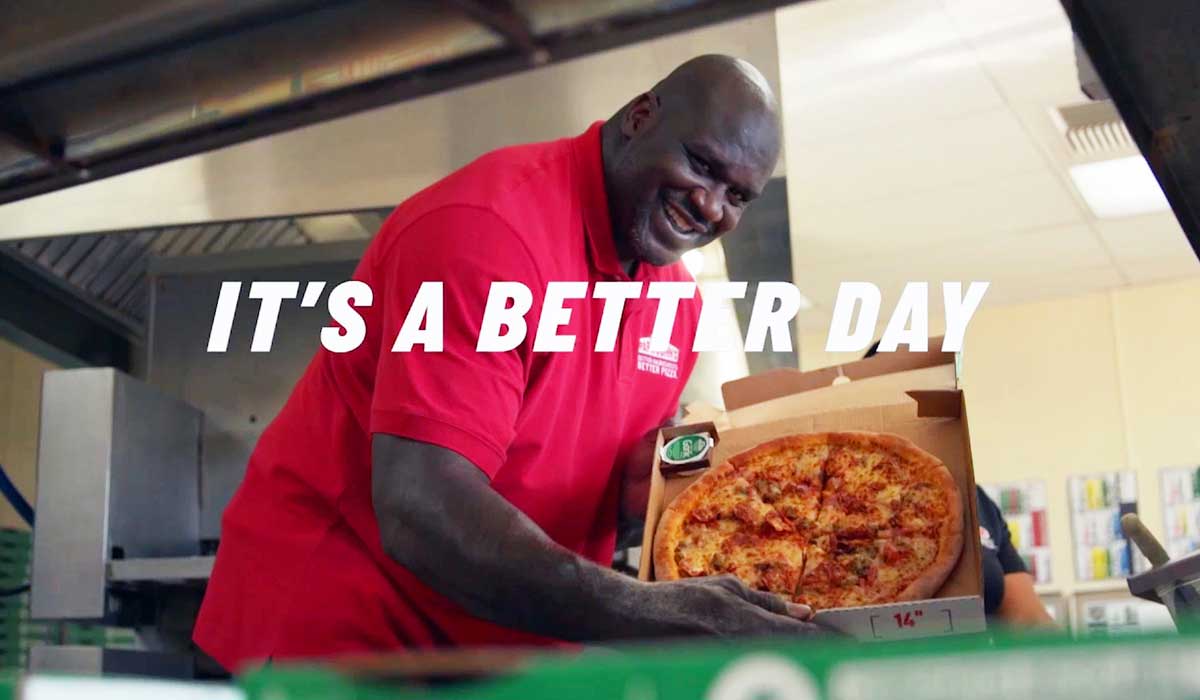
Who is going to win?
In light of these changes, counter-service brands appreciate a more optimistic outlook in 2020. That’s especially true of pizza chains, Saleh said. The Olympics are taking place in Tokyo, meaning there will be a 13-to 16-hour time difference for viewers. The result? More late-night pizza delivery from national chains.
This led Saleh to put two prominent pizza chains in his “Top Picks for 2020”—Papa John’s and Domino’s. The third brand was Chipotle.
Let’s start with the first, a turnaround project that’s still in the early innings but should remain one of the year’s biggest stories.
It’s been an ugly journey lately for Papa John’s, from a sales and PR perch. But much of that sentiment turned thanks to a new CEO and face of the brand. The pizza chain announced in August that Rob Lynch, former president of 3,400-unit Arby’s, was taking over for Steve Ritchie.
Not unlike Chipotle’s comeback with ex-Taco Bell head Brian Niccol at the controls, the move put a proven marketing exec in front. During his time at Arby’s, Lynch directed the company’s transformation into a “Fast-Crafted” brand. It posted 16 consecutive quarters of same-store sales growth and hit record sales and profits in 2018. Lynch held the president title at Arby’s since 2017, leading operations, marketing, culinary, and development, as well as digital initiatives. He joined the now-Inspire Brands run company in 2013 as CMO and spearheaded the “We Have the Meats” campaign. Lynch also served as president of Arby’s franchisee association since 2013, fueling the chain’s first new restaurant growth in a decade.
In the third quarter of fiscal 2019, Papa John’s reported its first positive same-store sales result since Q3 2017.
Previously, he held leadership positions at Taco Bell, HJ Heinz Company, and Procter & Gamble, and has 20 years combined experience in quick-service and consumer packaged goods.
Notably, PR Week named Lynch its 2017 Outstanding Marketer of the Year. He was called the 2017 Content Marketer of the Year by Digiday and was picked by AdAge as the 2015 Marketer of the Year.
It fit recent changes. When Starboard made a strategic investment in February—a move that included placing its CEO Jeff Smith as chairman—Papa John’s said it would use up to half of the initial proceeds, or $100 million, to advance its turnaround priorities. Of that amount, $40 million headed to marketing. And half was spent in the second half of 2019.
Additionally, it joined a 25 basis-point increase in Papa John’s national marketing fund contribution rate to 5 percent of restaurant sales in 2020 (to Saleh’s earlier point).
That measures as roughly $20 million to support a campaign featuring fresh brand ambassador Shaquille O’Neal. The NBA legend is set to break through Papa John’s materials in early September.
In November, Lynch added chief commercial and marketing officer Max Wetzel, previously the vice president of consumer brands and chief transformation officer at materials supplier PPG Industries. Wetzel will oversee Papa John’s marketing, menu strategy, product innovation, and customer experience. Additionally, company veteran Jack Swaysland was promoted to chief operating officer, International, while Jim Norberg—a long-time McDonald’s executive who joined Papa John’s this summer as chief of restaurant operations—assumed the title of chief operating officer, North America.
Three execs departed: chief operating and growth officer Mike Nettles, chief marketing officer Karlin Linhardt, and chief financial officer Joe Smith.
And Papa John’s took some same-store sales momentum into the final fiscal quarter of the year:
- Q2 2016: 4.8 percent
- Q3 2016: 5.5 percent
- Q4 2016: 3.8 percent
- Q1 2017: 2 percent
- Q2 2017: 1.4 percent
- Q3 2017: 1 percent
- Q4 2017: -3.9 percent
- Q1 2018: -5.3 percent
- Q2 2018: –6.1 percent
- Q3 2018: –9.8 percent
- Q4 2018: –8.1 percent
- Q1 2019: –6.9 percent
- Q2 2019: –5.7 percent
- Q3 2019: 1 percent
This is all welcomed news following a painful split with founder John Schnatter, who exited in 2018 following a report he used a racial slur in a conference call with then-marketing agency Laundry Service. He’s since filed suit against the firm.
Saleh said there are other reasons to like Papa John’s in 2020, too.
“We expect the change in leadership to drive fresh ideas including menu innovation and improved operations as we began to see in 3Q19 with company-operated restaurant margins improving by 490 basis points from last year,” he said.
Better labor efficiency, lower advertising, and favorable auto insurance due to the implementation of Drivosity GPS tracking, which is helping reduce driver accidents, all helped.
Also, corporate stores, of which just 621 of 3,296 North America units are company run, continue to have nearly 200 basis points higher insurance costs than franchisees, “suggest further gains are possible,” Saleh said.
“… Jim Norberg could help Papa John’s corporate stores close the 200-basis-point gap with franchisees on insurance costs, which have doubled in the past five years,” he added.
Saleh predicts that 200 basis points of restaurant-level margin equates to about $13 million in annual EBITDA, or 31 cents earnings per share.
Franchisee margins improved in Q3 for the first time in more than two years, thanks in part to the slightly positive same-store sales.
In terms of future sales drivers, Saleh said, menu innovation and an increase in marketing spend from incremental company contributions draws the framework. “We believe the governors on menu innovation have been removed with the appointment of new leadership, allowing for faster, more streamlined innovation such as new pizza crusts which were previously considered sacred cows,” he said. “Additionally, we would not be surprised to see Papa John’s introduce menu innovation tailored to compete at lunch with lower price points.”
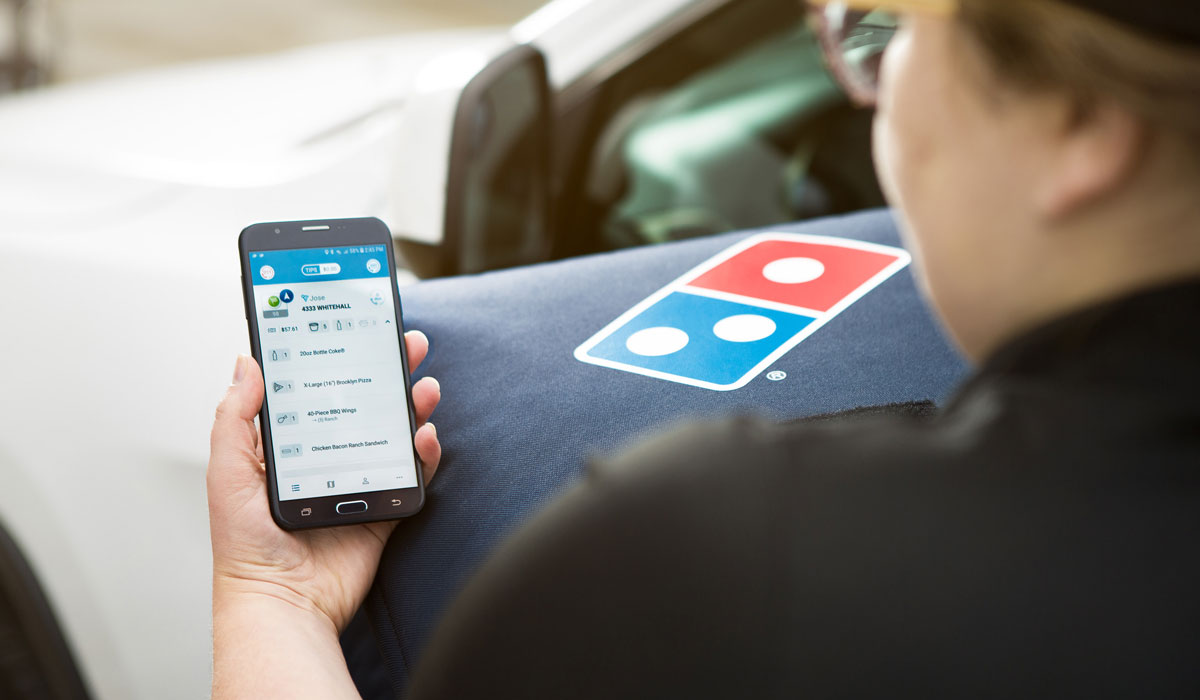
On to Domino’s
This past year was a strange one for Domino’s in some respects. The company’s domestic system sales have boomed more than 46 percent since 2015. Its stock tripled. Yet 2019 witnessed some relatively soft results.
Domino’s U.S. same-store sales climbed 2.4 percent in the third quarter that ended September 8, which marked the lowest figure in seven years (Q2 2018). Like always with Domino’s, though, this needs to be measured against its own bar of success. Despite the relative slowdown, it has put together 34 consecutive periods of domestic gains and 103 on the international side. Additionally, Domino’s opened 214 global net stores in Q3, including 40 in the U.S. The brand has brought 1,174 restaurants to market over the past 12 months.
Few chains approach that level of stability.
CEO Ritch Allison spoke at length in 2019 about the challenges facing Domino’s. Namely, playing the long-game journey and trying to weather a marketing and discounting blitz from third-party aggregators.
One thing has stayed consistent during this delivery storm: Domino’s continues to invest in its own capabilities. The chain announced in December the rollout of a GPS delivery tracking system built in-house and tested throughout 2019. Domino’s also remains intent on fortressing locations so it can take advantage of carry-out business (45 percent of total domestic orders) and improve delivery times and performance by cutting down the radius for drivers. Fortressing aids wage rates, too, by improving, over time, the number of deliveries per driver, per hour, Domino’s franchisees can leverage.
Saleh pointed out that Domino’s has not launched a new menu item since Bread Twists in June 2017, which is pretty intriguing. He believes the company will bring something fresh to market in the first half of 2020, as management has hinted, and could position the item on its famed $5.99 Mix and Match Menu. “… such a product introduction could reignite order growth and be a catalyst for stronger comparable sales as the year progresses,” he said.
“The domestic pizza category remains highly fragmented and despite Domino’s sales gains of recent years, it has only a high-teens market share, far below the concentration seen in other quick-service categories,” Saleh added.
Ahead in 2020: Domino’s could appreciate a lift from menu innovation, lower insurance costs thanks to GPS tracking (like Papa Johns), and some shakeout across the aggregator landscape, just like Allison predicted. If that happens, all of the delivery devices Domino’s has invested in, from real estate to tech, will pay off in a major way.
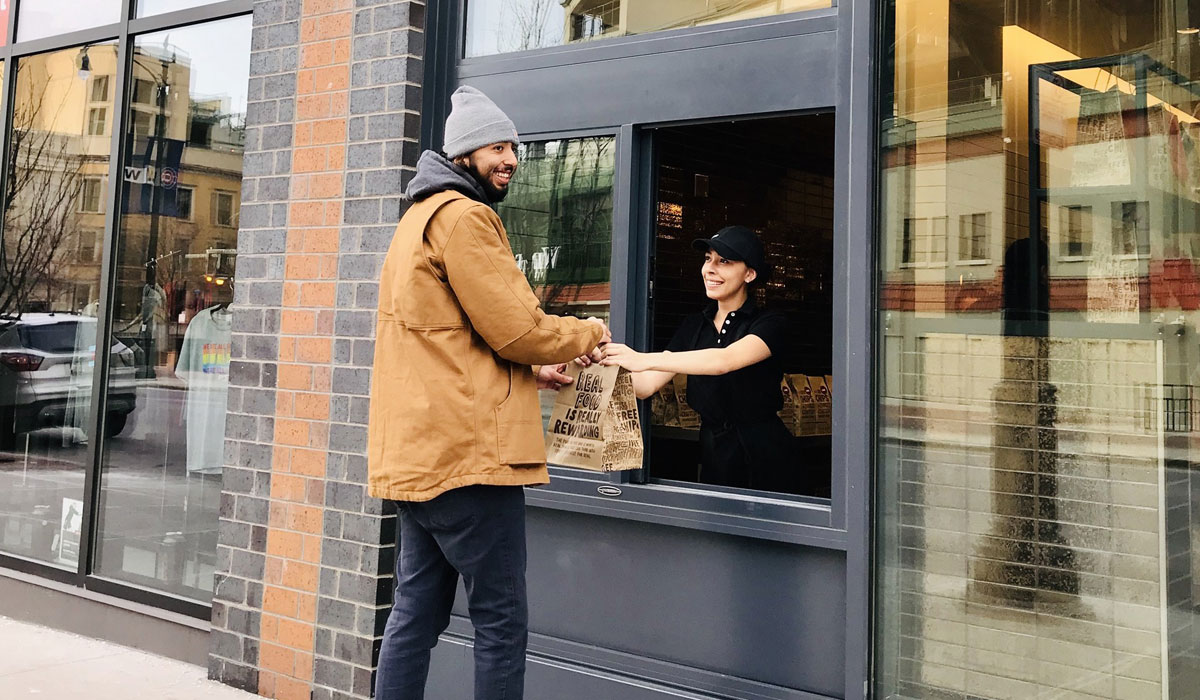
Chipotle still has runway
Saleh described the fast casual’s current trajectory as follows: “We believe digital engagement is becoming as important to the Chipotle story today as food with integrity has been for the past 15 years.” That is a stunning reality when you think about it. But if you examine every decision Chipotle is making these days, it’s 100 percent true. Just look at the store design the brand is testing across four units.
And something many pundits never thought they’d see: Chipotle is picking real estate around the drive thru. The company said earlier that of 150–165 planned new restaurants for 2020, more than half will have “Chipotlanes,” which feature mobile pick-up windows. This past year also marked the introduction of rewards (7 million enrolled members at Q3 close) and the broad rollout of delivery. Carne Asada also came to the menu, with Supergreens salad mix joining this week. That’s two new menu items in four months. Might not sound like a lot, but it surely is for Chipotle.
Digital now represents 18.3 percent of sales for Chipotle compared to just 11.2 percent a year ago and 6 percent in 2016.
Just focusing on Chipotle Rewards, management said loyalty customers tend to skew new and light users of the brand, suggesting it is driving incremental traffic to stores, Saleh said.
All of these digital changes led Chipotle to introduce digitized second make lines across its system in October. Saleh said this won’t just help serve added order volume from off-premises, it will also increase capacity for restaurants and eventually allow for menu innovation and customization, which, in turn, should further drive sales.
And even with all the improvement of late, average-unit volumes of $2.15 million are still considerably under peak levels of $2.4 million. Same with restaurant-level margin (20.5 percent versus 27.2 percent).
Saleh thinks Chipotle can get back to those numbers, which would only continue what’s been one of the industry’s top turnaround tales in recent memory.

